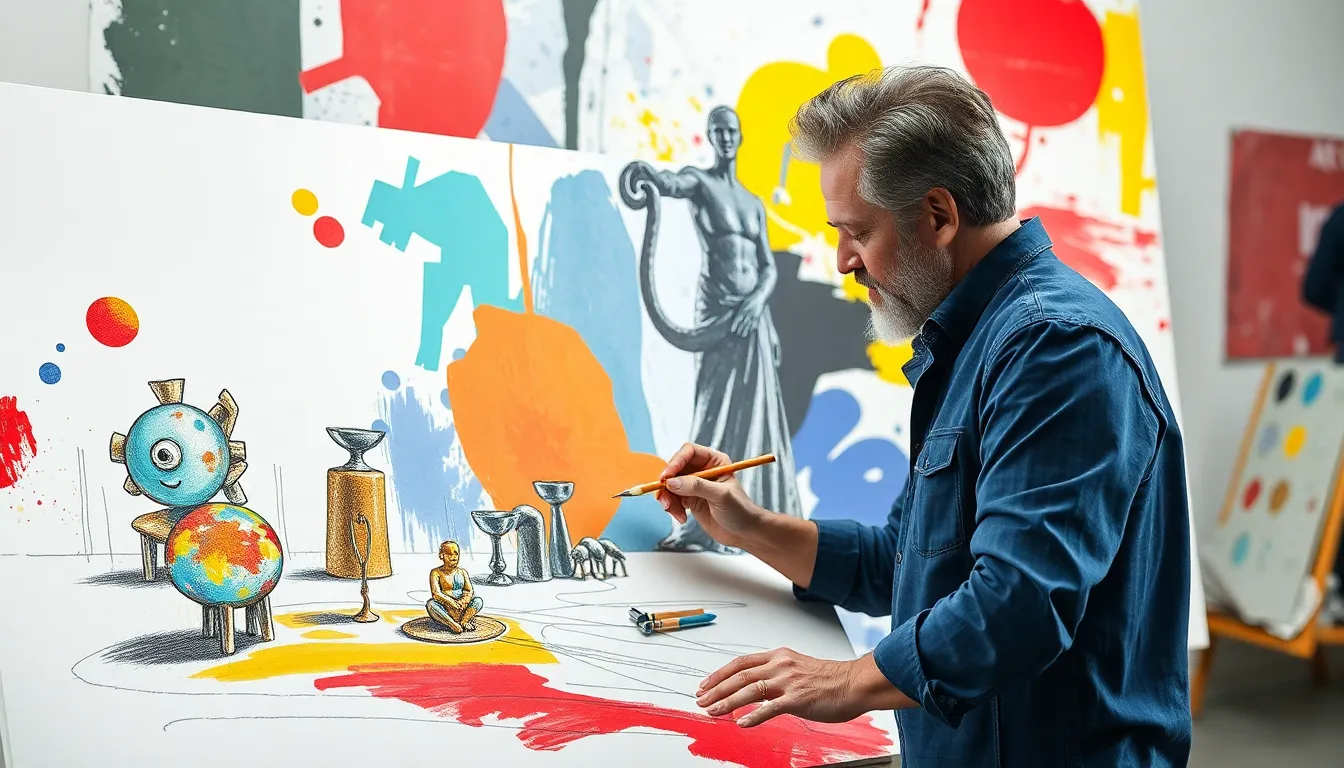The Best Fluffy Pancakes recipe you will fall in love with. Full of tips and tricks to help you make the best pancakes.

Transformation Drawing: Unlock Your Creativity with Simple Objects
In a world where doodles reign supreme and stick figures are the pinnacle of artistic achievement, transformation drawing emerges as the superhero of the art realm. It’s not just about turning a potato into a fabulous French fry; it’s about unleashing creativity and breathing life into the ordinary. Imagine taking a mundane object and, with a flick of a pencil, morphing it into something extraordinary.
Understanding Transformation Drawing
Transformation drawing represents a significant artistic technique that enriches the creative process. It engages artists in the exploration of ordinary objects, turning them into imaginative artworks.
Definition and Overview
Transformation drawing involves altering the form and depiction of an object to achieve unique artistic results. Artists utilize this technique to reinterpret shapes, colors, and textures, expanding their creative boundaries. Examples include transforming a simple apple into a fantastical creature or depicting a tree as a dynamic character. This approach encourages experimentation and helps strengthen an artist’s skills in observation and representation of reality.
Importance in Art and Design
Transformation drawing plays a crucial role in art and design disciplines. It enhances creativity by promoting original interpretations of everyday objects. Artists and designers frequently apply this technique to develop distinctive styles and concepts, pushing the limits of traditional representation. Engaging with transformation drawing stimulates critical thinking and innovative problem-solving, marking its significance in visual communication. By fostering creativity, this technique enriches various fields, from graphic design to fine arts.
Techniques for Transformation Drawing

Transformation drawing involves various techniques that enhance the creative process. Artists employ strategies such as scale and proportion, perspective changes, and style adaptation to achieve captivating results.
Scale and Proportion
Scale and proportion play vital roles in transformation drawing. Artists manipulate sizes of objects to create dynamic compositions. For instance, enlarging a small object emphasizes its significance in a scene. Conversely, shrinking large objects can invoke feelings of delicacy or insignificance. Utilizing unusual scales can prompt viewers to think deeper about the ordinary, making the artwork intriguing. Experimenting with proportion also alters the visual narrative and engages audiences creatively.
Perspective Changes
Perspective changes dramatically influence transformation drawing. By altering viewpoints, artists can reinvent the way viewers perceive objects. Employing techniques like forced perspective adds depth and realism. Creating unique angles can highlight features previously unnoticed. When artists present familiar subjects from unconventional perspectives, they encourage fresh interpretations. Adopting multiple viewpoints within a single piece invites exploration and curiosity, enriching the viewer’s experience.
Style Adaptation
Style adaptation enhances the transformation drawing process significantly. Artists can combine various styles to create something entirely new. Mixing realism with abstract elements offers a compelling visual juxtaposition. Adapting personal styles or even borrowing from different artistic movements can infuse originality into the work. Incorporating techniques from pop art or impressionism can lead to striking contrasts. This flexibility allows artists to express their creativity while transforming everyday objects into spectacular art forms.
Applications of Transformation Drawing
Transformation drawing finds utility across various artistic fields, significantly enhancing creativity and expression. By examining its applications, one sees how this technique influences character design, architectural visualization, and animation.
Character Design
Character design benefits greatly from transformation drawing. Artists utilize this method to redefine characters, blending distinct traits for unique personas. It enables the exploration of exaggerated forms and vibrant colors, capturing the essence of each character. By manipulating proportions, artists create memorable and dynamic figures. The approach fosters innovation, which improves storytelling through visually striking character representations.
Architectural Visualization
Architectural visualization also thrives on transformation drawing principles. Designers apply this technique to present innovative structures, manipulating forms and perspectives. Visual transformations facilitate a grasp of complex designs, allowing clients to visualize spaces more tangibly. Utilizing scale changes, architects showcase buildings in various contexts, generating impactful presentations. Ultimately, transformation drawing enhances spatial understanding, making concepts more accessible and exciting.
Animation and Storyboarding
In animation and storyboarding, transformation drawing plays a crucial role. Animators leverage this technique to develop dynamic movements, crafting fluid transitions between frames. By altering perspectives and poses, they create engaging sequences that grab viewer attention. Transformative techniques allow for the exploration of narratives through visually captivating storyboards. Artists combine creativity with technical skills, ensuring animated stories resonate emotionally, making transformation drawing essential in this medium.
Tips for Practicing Transformation Drawing
Practicing transformation drawing can enhance creativity and skill. Here are some practical tips.
Start with Simple Shapes
Begin by sketching basic shapes. Circles, squares, and triangles serve as foundations for more complex forms. Transform these shapes by adding details and adjusting proportions. For instance, a circle can evolve into a fruit or an animal. Focus on maintaining proportions while introducing new elements. Simple shapes provide a solid starting point, enabling artists to explore transformation with confidence.
Experiment with Different Styles
Diverse styles offer opportunities for artistic growth. Artists can blend realism with abstraction, creating unique interpretations. Mixing techniques like line drawing and watercolor expands creative boundaries. Strive to incorporate various textures, patterns, and color schemes into artwork. These variations lead to distinctive outcomes that enhance visual appeal. By exploring different styles, artists cultivate a personal expression that evolves over time.
Seek Feedback from Peers
Collaborative input enhances artistic development. Sharing transformation drawings with peers encourages constructive criticism. Feedback can highlight strengths and identify areas for improvement. Engage in discussions about techniques and approaches, gaining new insights. By actively seeking opinions, artists can refine their work and elevate their skills. Continuous interaction with others fosters a supportive environment for creative exploration.
Conclusion
Transformation drawing stands as a vital technique that empowers artists to reimagine the ordinary. By encouraging innovative interpretations and unique expressions, it fosters creativity across various artistic disciplines. The methods discussed not only enhance artistic skills but also inspire fresh perspectives on familiar subjects.
As artists embrace transformation drawing, they unlock the potential to create captivating works that resonate on deeper levels. This technique serves as a bridge between imagination and reality, inviting artists to explore and redefine their creative boundaries. Ultimately, transformation drawing enriches the artistic journey, paving the way for original and impactful expressions.
